One of the important differences between direct current and alternating current is that the polarity and the magnitude of alternating current vary at a particular interval of time while they remain at a constant value in direct current. Some of the other differences are mentioned below by explaining their key features of them and the various factors considered.
What is the Difference between Direct current and Alternating current?
The conducting substances have pure electrons that change from one atom to another when the special difference is operated within them. This movement of electrons in a particular circuit is introduced as current. On the foundation of the flow direction of electrons in that system, the electric current is generally categorized into two kinds, including the direct current and the alternating current.
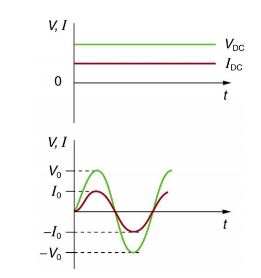
Electric current moves in two methods as direct current (DC) and alternating current (AC). In the direct form, current flows steadily in a single path, whereas in alternating current, it maintains switching directions occasionally – backward and forward. Therefore, the major difference between DC and AC is known as the direction in which the electrons move. In DC, the flow of electrons has a particular direction, whereas electrons switch their directions between forward and then backward paths in AC systems.
One useful feature of alternating current versus direct current is that it is comparatively cheap to modify the voltage of the current. In addition, the unavoidable loss of energy that happens when current is operated over long paths is far smaller with alternating type than direct systems. Let us understand more differences between them in the next sections clearly.
Main Difference Between Direct Current and Alternating Current
Alternative Current is a perfect method to use in long distances even between cities and keep the electric energy. The moving magnets cause variation in the direction of the electric path. The frequency of AC is based on the country. But the frequency is typically 50 Hz or 60 Hz. The flow of current modifies its path in AC periodically. Electrons in AC maintain the modification of their directions. Their load is usually capacitive, inductive, or resistive.
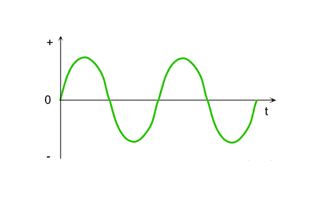
Alternating current is provided by irregular samples such as square wave, triangular wave, square tooth wave, and sine wave. They can be transmitted over long distances with some waste. They can be easily converted into direct current. A little substation is needed for the production and transmission of AC systems. Their main application is using in industries, factories, and for domestic aims.
DC types cannot employ for a very long distance. They waste electric energy more than AC types. The steady mechanism of magnets creates a DC path in a particular direction. DC type has no frequency. It moves steadily in a specific direction. Electrons only move in a forward direction. The basic load of DC form is naturally resistive. It is provided by a straight line.
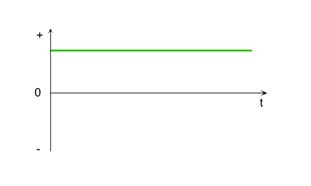
Direct current can be used over a short distance with negligible waste. Like alternating types, direct current can be easily converted into alternating types. However, more substations are needed for the production and transmission of them. Their main applications are in electrolysis, electroplating, and electronic instruments. The next video shows the difference between alternating current and direct current comprehensively.
What is an Alternating Current (AC)?
Alternating Current or AC is a format of electrical current, in which the flow direction of electrons shifts forth and back at particular cycles. Current flow in the power path and the usual electric household that is constructed from an outlet wall is introduced as alternating current. The normal current utilized in the U.S. is 60 cycles per second (known as a frequency of 60 Hz); however, in Europe and most other areas of the world, it is typically 50 cycles per second (a 50 Hz frequency).
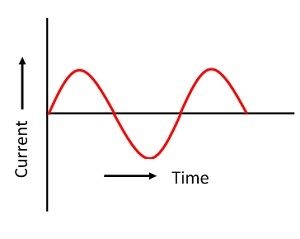
The electric charges the flow variation in different directions periodically in alternating current. AC is the most typically employed and most preferred electric energy for offices, household equipment, and buildings. It was first examined, according to the principles of Michael Faraday in 1832, applying a dynamo-electric motor.
The alternating current can be detected in a waveform known as a sine wave. In other words, it should be noticed that it is a curved line. These curved diagrams provide the electric cycles and are sensed per second. The sensing is read as Hz. The AC is employed in buildings and powerhouses according to the easy generating and transporting of AC. It is capable of supplying electric motors which are employed in washing machines, refrigerators, etc.
What is Direct Current (DC)?
Direct current or DC is an electrical current form that moves straightly in one direction. The current which is used in a flashlight or other applications such as employing on batteries is the direct current.
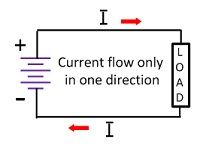
Dissimilar to the alternating current, the direct current flow does not vary periodically. So, the current moves in a fixed direction with a particular voltage. The main usage of DC is to provide energy for electrical instruments and also to supply batteries in various devices, including flashlights, mobile phone batteries, electric vehicles, and flat-screen televisions. DC type has the combination of minus and plus signs, a dotted or a straight line.
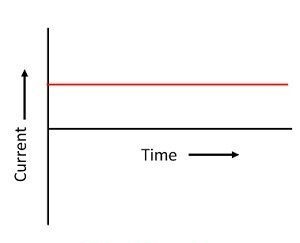
Everything that operates on a battery and employs the AC adapter while joining with a wall or utilizes a USB junction for power relies on direct current. Their application would be electric vehicles, cellphones, and TVs (AC comes into the TV and is transformed into DC).
The key difference between Direct Current and Alternating Current
- Direct current flows just in one direction or unidirectional. The current that modifies its direction at a particular form of time is introduced as an alternating current.
- The charges in the alternating system move by circulating a coil in a magnetic section or by joining a magnetic part with a fixed coil. The charges move in direct current by keeping the fixed magnetism within the wire.
- The frequency of the direct system often remains zero, while the alternating current frequency is typically between 50 to 60 Hz based on the standards of each country.
- The power coefficient of the alternating system changes between 0 to 1, while this factor in the direct current consistently remains one.
- The alternating current is produced by the alternator system. On the other hand, the direct current is created by the battery, generator, or cells.
- The load in the alternating system has various items, including inductive, capacitive, or resistive. A load of DC systems is naturally resistive.
- Based on the graphical aspects, the alternating current is provided by various irregular wave shapes, including periodic waves, triangular waves, saw-tooth waves, square waves, sine waves, etc. However, the direct current can be graphically represented just by a straight line.
- The alternating current can be used in long-distance applications with some wastes, while the direct current can be employed with partial losses.
- The alternating current is transformed into a direct system by using a rectifier, while the direct current requires an inverter to convert it into an alternating current.
- A lot of substations need for the transmission process of the direct system, while a few substations are necessary for the production and transmission of the alternating current.
- The alternating current is utilized in factories, industries, and household applications. The direct system is typically employed in hybrid vehicles, flash lighting, electronic equipment, electroplating, electrolysis, and the generation of exciting the field of the rotor.
Frequently Asked Questions on the Difference Between Direct Current and Alternating Current
Why AC Cannot Be Stored in Batteries Instead Of DC?
It is vital to know that batteries do not save power directly in them. They save electrical power in the format of chemical energy. The positive part of an AC system is attached to the positive section of the cell, and the negative part of an AC system is attached to the negative output of the battery. So, the current begins to flow.
However, AC modifies its polarity, and there is no practical source of power. This is due to the fact that the positive half-section removes the negative half-section. If this procedure keeps on, it can harm the battery. As a result, alternating current is not stored in batteries.
What are the advantages of AC over DC?
The advantages of alternating current over direct current are mentioned below:
- The power waste during the transmission process in AC is less in comparison with the DC.
- The usable distance which can be used by AC form is more than the DC systems.
- AC is less expensive and simple to produce than DC.
Point to Remember in the Difference Between Direct Current and Alternating Current
The direct current is more hazardous than the AC system. The magnitude of the current becomes low and high in alternating current at a particular reference of time, while in the direct current type, the magnitude stays at the same condition. As a result, the alternating current enters and exits from the human body at a particular time interval when the body is getting shocked, while the direct current damage the body persistently without any interruption.
Buy Equipment or Ask for a Service
By using Linquip RFQ Service, you can expect to receive quotations from various suppliers across multiple industries and regions.
Click Here to Request a Quotation From Suppliers and Service Providers
Read More on Linquip
- What are the Advantages of Alternating Current?
- What are the benefits of AC in Long-distance Transmission?
- Difference Between Current and Static Electricity
- Current Transformer Types and Applications
- What is the Current Transformer?
- What are the Disadvantages of Direct Current?
- Why DC Current Is Not Used In Homes

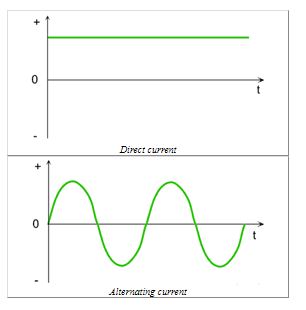


Who wrote this article?
It is packed with errors!
It would be great to see your comments in detail.
Thanks a lot